Effective customer relationship management (CRM) is essential for any business aiming to foster strong customer relationships, improve satisfaction, and drive growth. This article outlines the best practices in customer relationship management, focusing on actionable strategies that can help businesses enhance their CRM efforts and achieve better results. Expect insights on setting clear goals, customizing your CRM system, leveraging automation, and more.
Key Takeaways
- Setting clear, SMART objectives for CRM is essential for tracking progress and aligning with business goals, ultimately enhancing customer satisfaction and retention.
- Customizing the CRM system to meet specific business needs, including utilizing custom fields and pipelines, leads to improved data management and streamlined sales processes.
- Regularly auditing and cleaning data, along with ongoing training for users, is vital for maintaining data integrity and maximizing CRM effectiveness, fostering better decision-making and customer interactions.
Table of Contents
Define Clear CRM Goals
Setting clear CRM goals is fundamental to any successful customer relationship management strategy. These goals provide a roadmap for the implementation and usage of your CRM system. Without clear objectives, measuring progress and making necessary adjustments becomes difficult. CRM aims to drive business growth by increasing customer loyalty and lifetime value, thus enhancing overall business performance.
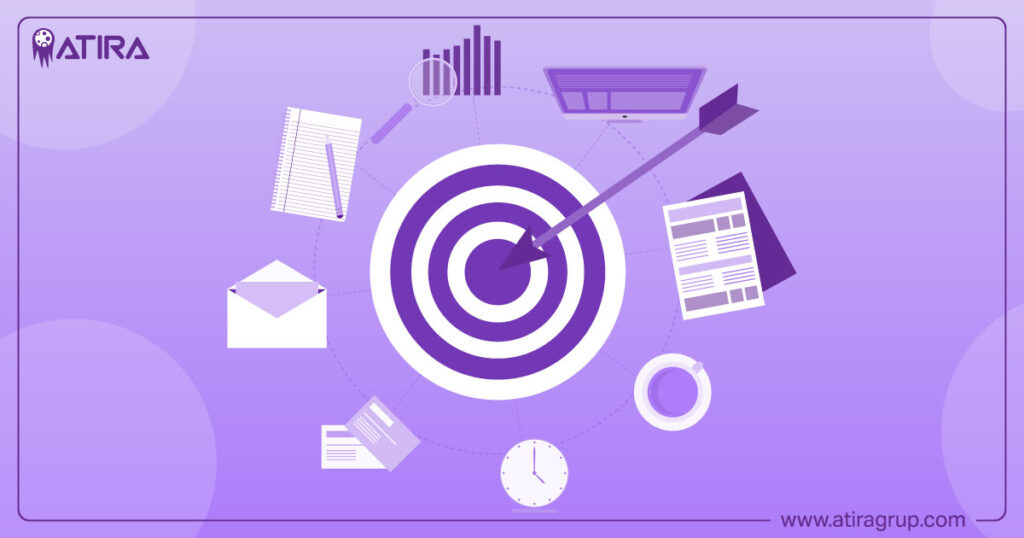
A well-defined CRM strategy focuses on customer satisfaction, loyalty, and retention, which are crucial for long-term success. Setting measurable and realistic goals allows businesses to track progress and adjust strategies as needed to meet their objectives.
A clear CRM strategy ultimately leads to improved customer satisfaction, streamlined processes, and increased customer retention.
Set SMART Objectives
SMART (Specific, Measurable, Achievable, Relevant, Time-bound) objectives are crucial for effective CRM implementation. Clear and actionable goals using the SMART criteria ensure focused and effective CRM efforts. For instance, a SMART goal for CRM could be to increase sales by 10% in the next quarter. Such specific and measurable objectives allow businesses to track their progress and make data-driven decisions.
CRM systems provide valuable insights into customer behavior, preferences, and trends, which can help in defining and adjusting these objectives. Clear, actionable goals promote effective customer relationship management software implementation and enhance customer relationships by aligning the business with customer needs and expectations.
Align with Business Strategies
Strategic alignment between business goals and CRM features is necessary for a successful CRM system. CRM goals should map to business goals for effective implementation and utilization. When CRM strategies are aligned with overall business objectives, it leads to improved customer satisfaction, enhanced communication, increased sales, and better customer retention. This alignment ensures that the CRM system supports the broader business strategy and helps achieve desired outcomes.
Effective client relationship management is key to managing customer interactions and enhancing customer relationships. Aligning CRM goals with business strategies ensures that sales and marketing teams work towards the same objectives, resulting in more cohesive and effective campaigns. This strategic alignment also helps in improving business processes and operations, leading to better business performance and growth. Additionally, organizations must effectively manage client relationships to maximize their potential.
Integrating CRM with business strategies allows for personalized customer interactions and better segmentation, ultimately improving service and satisfaction. Ensuring CRM goals are in sync with business objectives enables effective client relationship management and positive outcomes. This approach not only enhances customer relationships but also supports overall business growth and performance.
Customize Your CRM System
Customizing your CRM system to meet specific business needs is crucial for maximizing its effectiveness. A one-size-fits-all approach rarely works, as each business has unique requirements and pain points. Clearly communicating these needs and selecting a CRM solution aligned with long-term goals ensures adaptability for future growth.
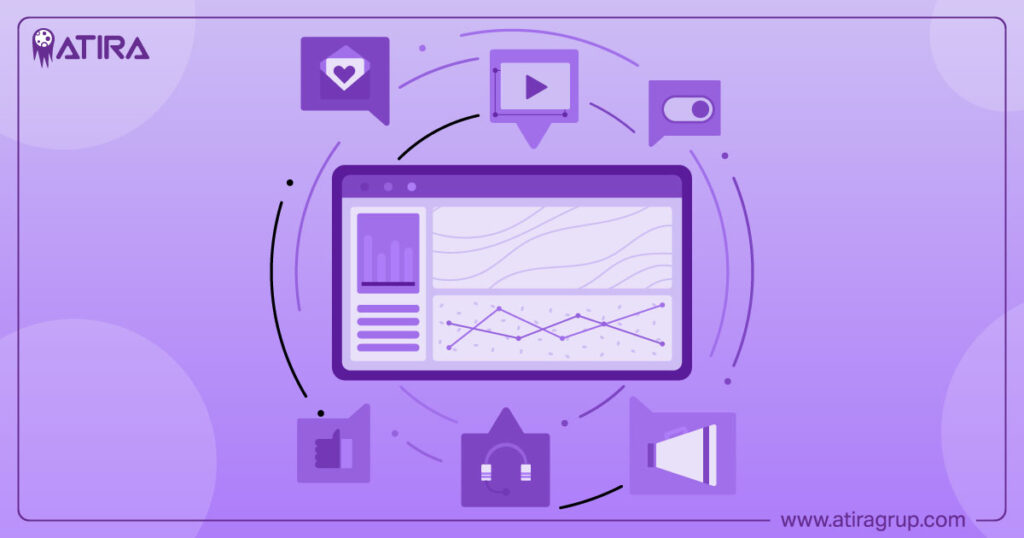
Utilizing CRM features for streamlined sales processes and accommodating custom fields is essential. Clear goals and objectives ensure focused and effective CRM efforts, leading to improved customer relationships and satisfaction.
Use Custom Fields
Custom fields in your CRM system capture valuable content critical for understanding customer preferences. These fields enable tailored data collection, allowing businesses to gather specific, relevant information. Adding custom fields enhances the functionality of the CRM system, making it easier to search for and analyze customer data.
Personalizing customer interactions becomes more manageable when you have detailed information about your customers’ preferences and behaviors. Custom fields help in managing customers data more effectively, leading to better-targeted marketing efforts and improved customer satisfaction.
Create Custom Pipelines
Creating custom pipelines in your CRM system helps visualize the sales process, identifying bottlenecks and areas for improvement. Custom pipelines allow businesses to tailor their sales processes to fit unique needs, ensuring each stage is optimized for maximum efficiency.
This visualization aids in managing customer interactions more effectively, leading to enhanced customer relationships and improved business performance.
Train Your Team Effectively
Effective training ensures your team can fully utilize your CRM system. Proper training enhances CRM efficiency, leading to improved employee productivity. CRM implementation should be seen as a continuous process, with both preparatory and ongoing training to accommodate evolving features.

Alignment and collaboration across all departments facilitate seamless CRM utilization. Involving sales and marketing teams early ensures the system meets the specific needs of different departments. This approach not only improves customer satisfaction but also enhances overall business performance.
Conduct Initial Training Sessions
Timing initial training sessions appropriately before the CRM goes live is critical. Avoiding training too early or too late ensures employees retain the information and are ready to use the system when operational. Regular practice sessions help teams grasp the system and avoid frustration, facilitating smoother transitions to the new platform.
Highlighting the benefits of the CRM system and establishing regular training sessions is crucial during the initial phase. This approach helps users understand the value of the CRM system and encourages them to utilize its features effectively, leading to improved customer interactions and service.
Provide Ongoing Support
Ongoing support and refresher courses ensure employees can effectively utilize evolving CRM features. Leveraging your CRM vendor’s expertise enhances user training and long-term support, addressing issues promptly and maintaining system efficiency.
Regular analysis of CRM usage reports highlights underutilized features and improves employee engagement with the system. By implementing continuous support and refresher courses, businesses can maximize the effectiveness of their CRM system and foster user proficiency, leading to enhanced customer relationships and satisfaction.
Standardize Data Entry Procedures
Standardized data entry procedures are essential for maintaining data integrity in your CRM system. Setting data standards after onboarding and implementing your CRM ensures consistency and accuracy. Standardizing naming conventions and data entry protocols reduces duplicate data and improves tracking and analysis, enhancing customer data management.
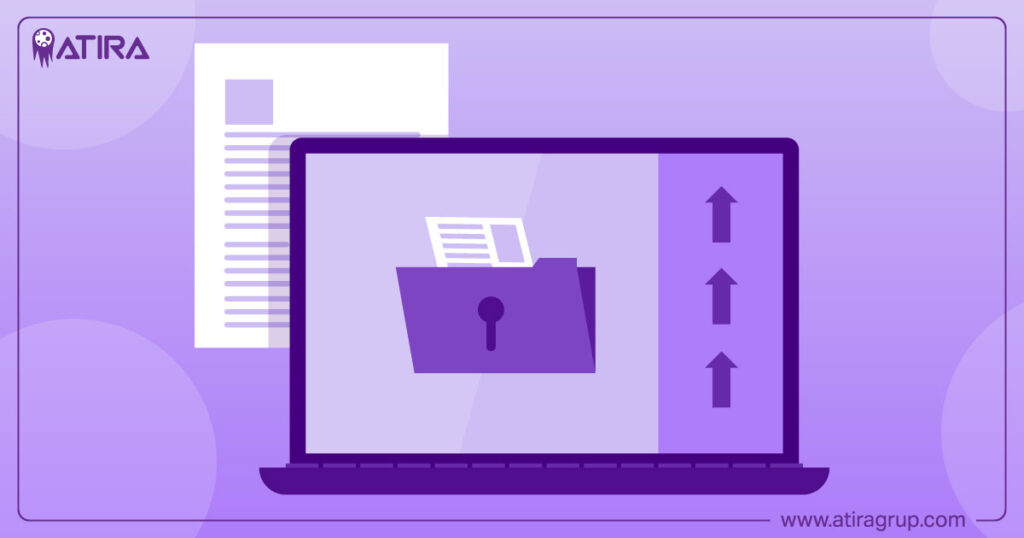
Adopting a standard method for data management eliminates errors and duplicate entries, enhancing database accuracy and customer communications. This approach not only streamlines business processes but also contributes to improved customer satisfaction and overall business performance.
Implement Data Entry Guidelines
Clear data entry guidelines are vital for maintaining high data quality. User workflows and data management processes need to be clearly defined to enhance data quality. Limiting the number of required fields during data entry increases user adoption and CRM effectiveness. Using forms and data templates ensures consistent data entry and maintains data integrity.
Setting a data maintenance schedule and standards helps minimize insufficient data entry in a CRM. Standardizing redundant fields in legacy data ensures relevance and accuracy, helping maintain a clean and effective database.
Utilize Data Validation Tools
Data validation tools improve the quality of information entered into the CRM by reducing incorrect data and ensuring conformity to requirements. Clean data is crucial for CRM, playing a vital role in successful marketing efforts. Data cleansing tools can remove invalid emails, identify duplicates, and automate the cleaning process to ensure accurate customer data.
Selecting data cleansing tools should focus on features like automation, bulk data formatting, and intelligent duplicate detection for efficiency. By maintaining high-quality customer data, businesses can gain valuable insights and improve their reporting capabilities, leading to better decision-making and enhanced customer satisfaction.
Leverage Automation for Efficiency
Automation within your CRM system significantly enhances productivity by saving time and improving accuracy. CRM automation can encompass areas such as customer service, workflow, lead qualification, lead assignment, and email marketing. Automation in these areas streamlines business processes and reduces employee workload, allowing focus on more strategic tasks.
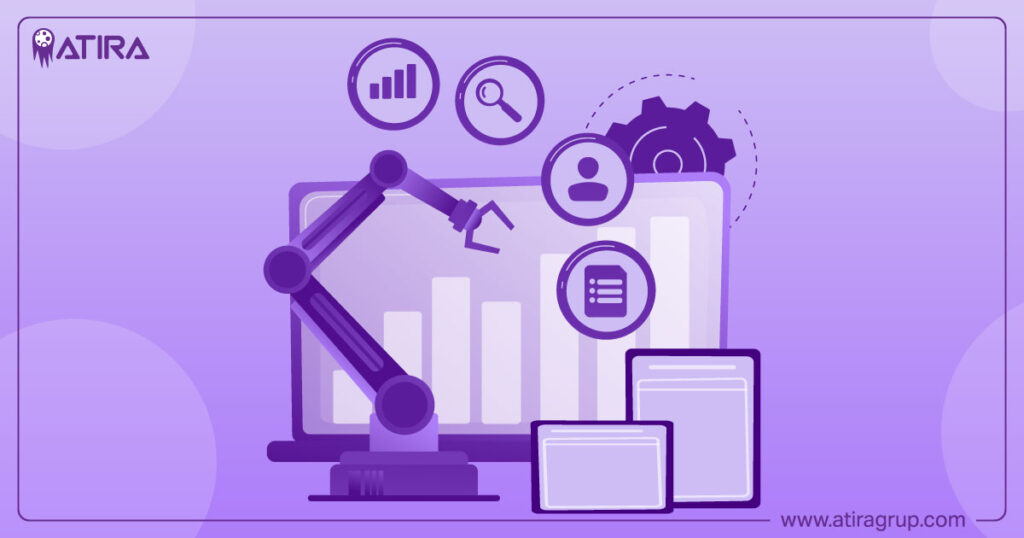
CRM automation boosts productivity and improves customer satisfaction by ensuring consistent and timely interactions. Automating repetitive tasks and data entry processes enhances data quality and reduces errors, leading to better customer experiences and improved business performance with crm software.
Automate Sales Processes
Automating sales processes significantly reduces the time for lead assignment and follow-up. Leads received by the CRM system are automatically assigned to salespeople, ensuring prompt follow-up and improved lead management. Custom rules and pipelines in CRM shorten the sales cycle by optimally allocating leads to sales representatives based on their expertise.
Data provides insights that fuel employee productivity, enabling improved performance in automated sales processes. Automating sales tasks enhances efficiency, reduces marketing costs, and improves customer satisfaction through timely and personalized interactions.
Use Marketing Automation
Marketing automation enhances customer campaigns by delivering targeted campaigns using customer history and journey insights. CRM email marketing software automates messaging for target segments and personalized drip campaigns, ensuring relevant and timely communications. Best practices for building an email subscriber list include identifying and qualifying leads organically.
Personalization techniques, such as using the recipient’s name and location, enhance email marketing effectiveness. Emails should include a clear call to action to encourage further engagement from recipients. Customers experience frustration when personalization does not occur, emphasizing the need for effective customer segmentation and tailored communication.
Integrate CRM with Other Systems
Integrating your CRM with other tools your team uses improves data accessibility and enhances operational efficiency. Effective CRM implementation improves business efficiency by providing a unified view of customer data. Third-party integrations that improve CRM capabilities include help desk software, calendar platforms, order management, and accounting.
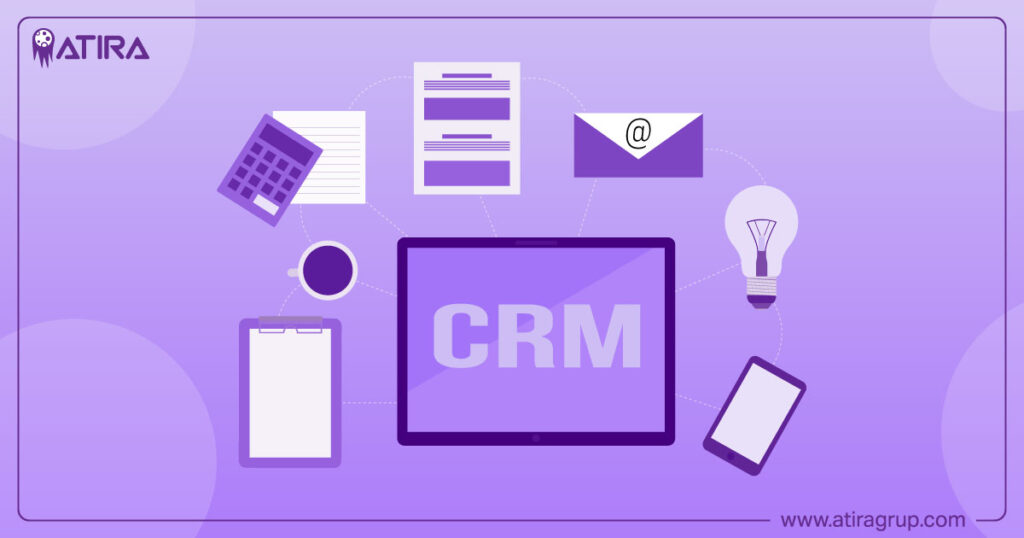
Integrating CRM and ERP systems improves visibility and synchronizes customer data across departments. Unified CRM systems streamline operations and enhance data accuracy, leading to improved customer experiences and overall business performance.
Integrate with ERP Systems
Integrating CRM with ERP systems maintains synchronized data across business functions. This integration enables real-time updates to a unified data model, ensuring accurate information is always available. A unified view of data allows businesses to make informed decisions based on current information, supporting seamless operations and enhancing efficiency.
Synced data between CRM and ERP systems creates seamless operations and improves customer satisfaction through accurate and timely communication. This integration supports better decision-making and enhances customer relationships by providing a holistic view of customer interactions and preferences.
Connect with Marketing Platforms
Linking CRM with marketing tools improves tracking of customer engagement and enhances marketing campaign effectiveness. A connected system allows organizations to monitor customer interactions across various marketing channels, enabling more targeted strategies and improved marketing ROI. Email marketing and social media management can be automated to free up time for marketing teams, increasing efficiency and productivity.
Integrating CRM and marketing platforms leads to improved efficiency and better marketing outcomes. Ensuring sales and marketing teams are on the same page allows businesses to deliver more cohesive and targeted marketing efforts, ultimately improving customer satisfaction and engagement.
Regularly Audit and Clean Data
Regularly auditing and cleaning CRM data maintains its accuracy and relevance. Unreliable data can cost businesses billions annually, making data integrity a top priority. Data audits identify processes that don’t work, data integrity issues, and potential malicious activity, ensuring CRM data remains accurate and secure.

Improving data performance and accessibility involves deleting unused tags and ensuring data complies with entry standards before import. This approach helps maintain a clean and efficient database, supporting better decision-making and customer interactions.
Schedule Routine Audits
Routine audits identify and implement corrective actions to improve CRM data quality. Consider interaction history and stale contacts during data migration to reduce unnecessary data and maintain an efficient database. Setting a cut-off date for adjusting contact details helps minimize data clutter and ensures that the CRM system remains relevant and up-to-date.
Involving team members who deal with prospects in the data migration process provides valuable input and ensures that the data remains accurate and useful. Routine audits help maintain data integrity and support better decision-making, ultimately enhancing customer satisfaction and business performance.
Cleanse Historical Data
Regularly cleansing historical data is essential for ensuring information remains relevant and useful for current business needs. This practice not only enhances the relevance of information but also supports better decision-making by providing accurate and up-to-date data.
By maintaining clean and relevant historical data, businesses can improve customer interactions and overall CRM effectiveness.
Personalize Customer Interactions
Personalizing customer interactions is a key aspect of effective CRM. Analyzing customer data through CRM systems allows businesses to deliver tailored experiences that enhance customer engagement and satisfaction. Continuous engagement through positive interactions helps maintain strong relationships with key clients, ultimately improving customer loyalty, customer behaviors, and retention.
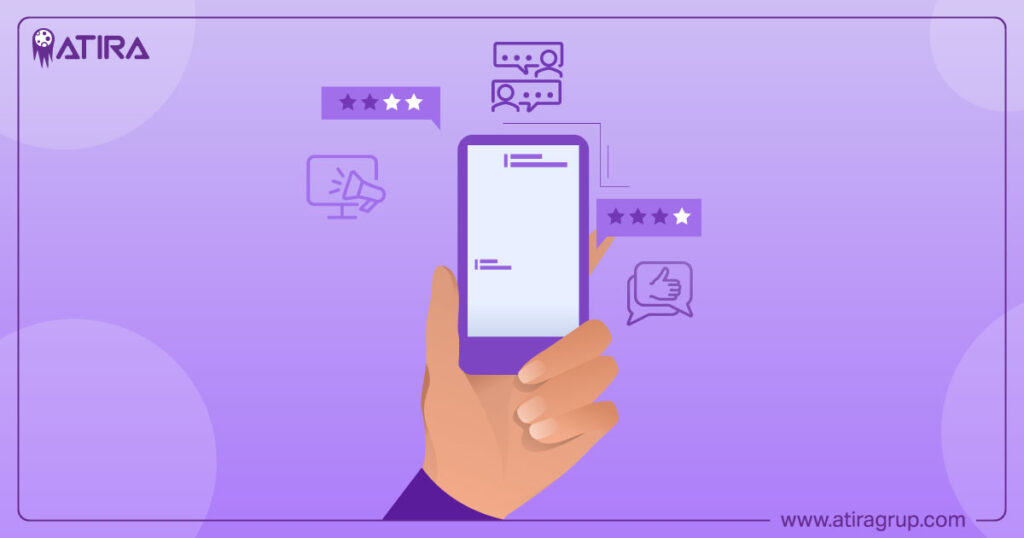
Utilizing CRM data to inform marketing strategies enables businesses to create more targeted and effective campaigns. By personalizing customer interactions, businesses can ensure that their marketing efforts resonate with specific audiences, leading to higher conversion rates and improved customer satisfaction.
Segment Customers
Effective customer segmentation can lead to targeted marketing efforts that resonate with specific audiences. Segments can be created based on geographic locations, interests, demographics, or other factors, allowing businesses to tailor their marketing strategies accordingly. Analytical CRM enables organizations to develop targeted marketing campaigns, resulting in improved customer engagement and higher conversion rates.
By segmenting customers, businesses can ensure that their marketing efforts are more relevant and personalized, leading to better customer relationships and increased satisfaction. This approach helps in managing customer interactions more effectively and supports overall business performance.
Use Personalized Communication
Personalized messages can significantly increase customer response rates and engagement. Crafting personalized messages based on individual preferences and behaviors enhances the relevance of communication with customers, leading to stronger relationships and improved customer satisfaction. Integrating personalized communication strategies into CRM practices fosters customer loyalty and retention.
Tailoring interactions based on individual preferences not only strengthens customer relationships but also improves customer service and overall business performance. By using personalized communication, businesses can ensure that their interactions with customers are meaningful and impactful, leading to higher customer satisfaction and loyalty.
Monitor CRM Performance
Monitoring CRM performance is essential for maximizing the return on CRM investments. Utilizing data analytics within CRM can help generate actionable insights for business growth and identify best- and worst-selling products. Tracking key performance indicators (KPIs) such as customer retention rates and sales cycle length is crucial for understanding CRM effectiveness. High-quality CRM data is essential for making informed decisions and improving business performance.

Continuous training ensures that employees remain informed about updates and can utilize new features effectively. Regular refresher courses reinforce best practices and maintain team proficiency with the CRM system. If CRM features are underutilized, remedial training or system changes may be necessary to optimize the system’s usage.
Analyze Usage Reports
Continuously tracking CRM performance metrics helps measure effectiveness and identify areas for improvement. Monitoring key performance indicators (KPIs) such as customer retention rates, sales cycle length, and customer satisfaction scores is essential for understanding how well the CRM system is performing. Reviewing these reports helps in understanding how employees interact with the CRM and identifying functionalities or features that are not being fully utilized.
Regularly analyzing usage reports provides valuable insights into CRM performance and employee engagement, helping businesses make data-driven decisions to optimize their CRM processes. This approach supports better customer interactions and overall business performance.
Track Key Metrics
Monitoring key performance indicators (KPIs) such as customer retention rates and customer satisfaction scores is crucial for assessing the success of CRM efforts. These metrics provide insights into how well the CRM system is supporting business objectives and customer relationships.
By tracking these key metrics, businesses can ensure that their CRM strategies are effective and aligned with their goals.
Collaborate with Your CRM Vendor
Collaborating with your CRM vendor is essential for optimizing system use and addressing any issues promptly. Effective collaboration between your business and the CRM vendor enhances productivity and builds trust, ensuring that the system meets your specific needs. Regular communication with your CRM vendor is crucial for successful collaboration and project transparency.
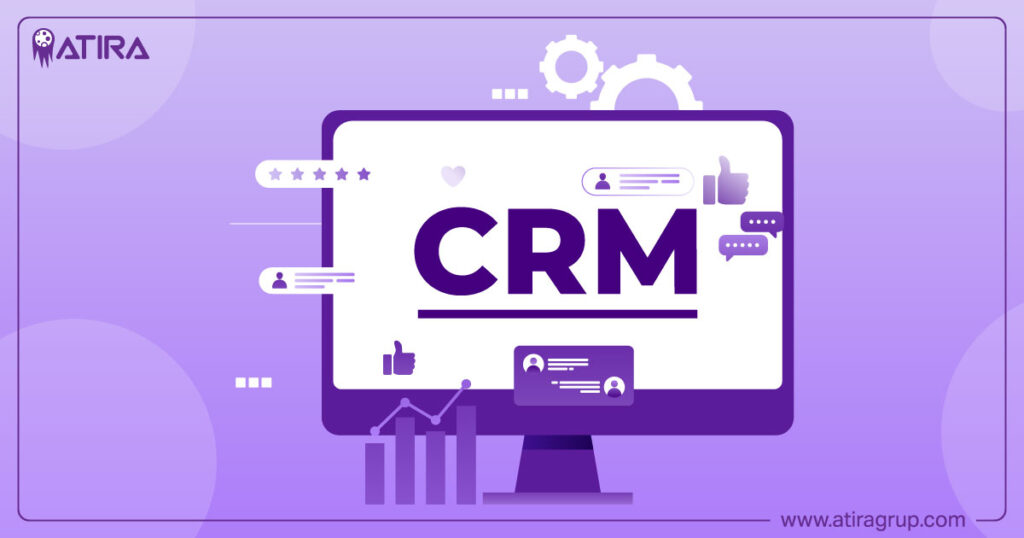
Working closely with your CRM vendor allows you to leverage their expertise and resources, ensuring that your CRM system is tailored to fit your unique business processes and requirements. This collaboration supports better system performance and overall business efficiency.
Utilize Vendor Support
Effective vendor support is crucial for ensuring that implementation teams have well-trained and sufficient resources. Vendor support facilitates troubleshooting, providing timely solutions to issues that arise during the initial CRM setup. Customization performed with the aid of vendor support can tailor the CRM system to fit the unique business processes, enhancing its effectiveness and usability.
Vendor support provides essential training resources to ensure users can leverage all CRM features effectively, leading to better customer interactions and improved satisfaction. By utilizing vendor support, businesses can optimize their CRM system and ensure it meets their specific needs.
Participate in User Communities
Participating in user communities can help CRM users share experiences, gain insights, and learn best practices from others in the field. Collaboration with your CRM vendor allows you to be more actively engaged in user communities, leading to better information sharing and networking opportunities. Utilizing vendor support can provide additional resources and guidance, enhancing your experience in user communities and helping you to maximize your CRM system’s potential.
By participating in user communities, businesses can stay updated on the latest CRM trends and best practices, ensuring that their CRM strategies remain effective and relevant. This approach supports better customer interactions and overall business performance.
Summary
In summary, implementing the top 10 best practices in CRM for 2025 can significantly enhance customer relationships and drive business growth. From defining clear CRM goals and customizing your CRM system to training your team effectively and leveraging automation, each practice plays a crucial role in optimizing CRM processes. Regularly auditing and cleaning data, personalizing customer interactions, and monitoring CRM performance are essential for maintaining data integrity and improving customer satisfaction.
Collaborating with your CRM vendor and participating in user communities further enhances CRM effectiveness and ensures that your system evolves with your business needs. By adopting these best practices, businesses can ensure they are well-equipped to manage customer relationships effectively and achieve their strategic goals. Embrace these practices to transform your CRM efforts and drive long-term success.
Read more:
Top 10 CRM Business-to-Business Solutions: Pros & Cons
CRM vs CMS: Choosing the Best Fit for Your Business Needs
Frequently Asked Questions
Why is it important to define clear CRM goals?
Defining clear CRM goals is essential as it provides direction for system implementation, facilitates progress tracking, and enables necessary adjustments that drive business growth and enhance customer loyalty.
How can custom fields enhance CRM functionality?
Custom fields significantly enhance CRM functionality by capturing valuable customer preferences, allowing for tailored data collection and improved search capabilities. This leads to a more personalized approach in managing customer relationships.
What role does vendor support play in CRM implementation?
Vendor support plays a crucial role in CRM implementation by ensuring that teams are well-trained, troubleshooting issues effectively, and customizing the system to align with specific business needs. This support ultimately leads to a smoother and more efficient implementation process.
Why is data validation important in CRM?
Data validation is crucial in CRM as it significantly enhances data accuracy and integrity by minimizing the risk of incorrect information. This ensures that the information entered meets predefined requirements, ultimately leading to better decision-making and operational efficiency.
How does marketing automation improve customer campaigns?
Marketing automation significantly improves customer campaigns by enabling targeted messaging based on customer insights, which enhances engagement and increases conversion rates through personalized communication. This strategic approach ensures that campaigns are more effective and resonate better with the intended audience.


